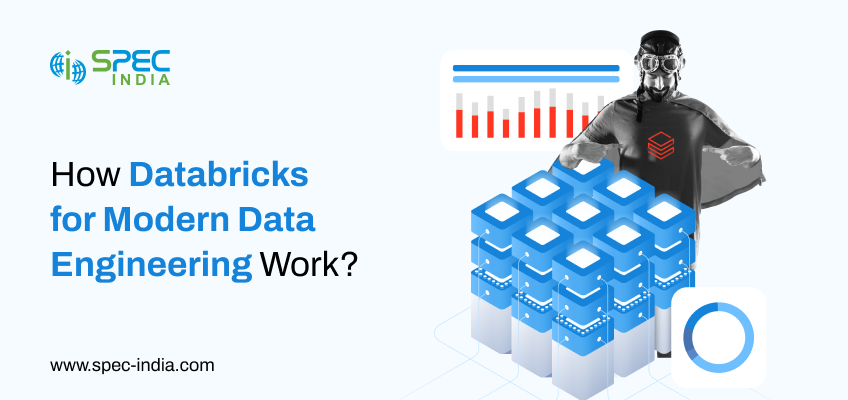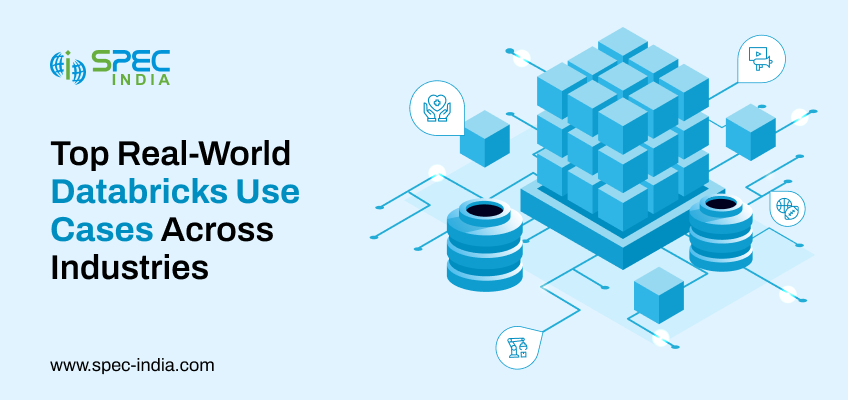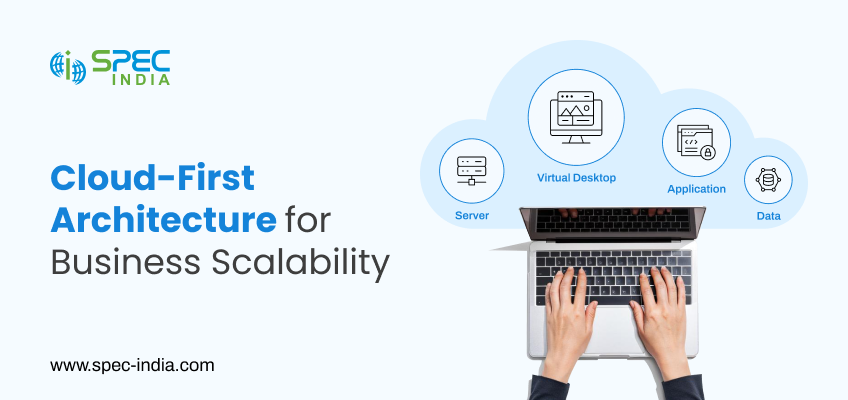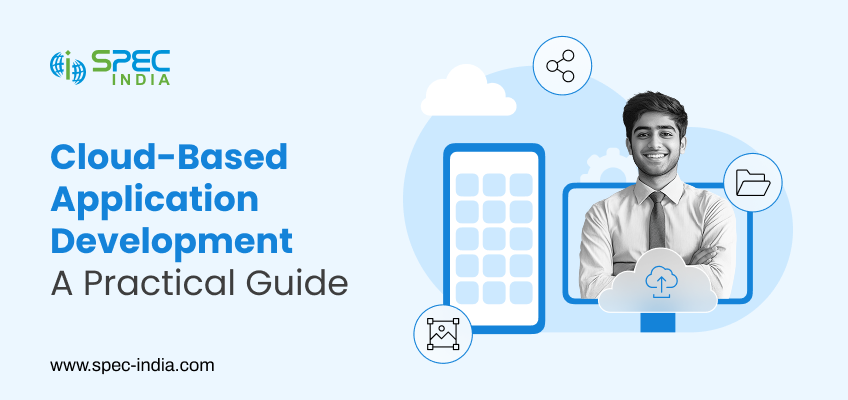Teradata vs Snowflake: Two Data Warehousing Solutions Often Compared
Posted
September 13, 2022
In an era ruled by data, there is ample data being collected from disparate data sources that must be managed. Data warehousing is one of the prime activities in the business intelligence and analytics domain that collects organizes, and manages data from different data sources to offer insightful business analytics and information to all those involved.
Two big names in the world of data warehousing solutions are Teradata vs Snowflake which are often discussed in comparison to each other.
Choosing between the two – Snowflake or Teradata is a tricky choice to make. Both have been gaining popularity in recent years owing to their salient features.
Let us go through them individually with their characteristics, integration capabilities, and critical features and then compare them.
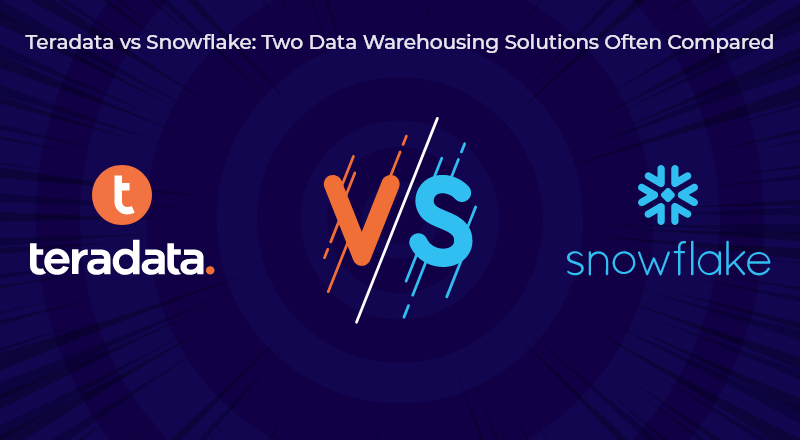
What Is Teradata?
Teradata Vantage is the connected multi-cloud data platform for enterprise analytics that unifies everything—data lakes, data warehouses, analytics, and new data sources and types.
Teradata is a well-known relational database management system that is considered ideal for huge data warehousing activities where is there a large volume of data involved.
The database system here involves communication networking and multiprocessing to have huge parallel processing units that can behave like a data store with multiple requests simultaneously.
Teradata features are highly scalable and connected as a multi-cloud platform. It can be deployed anywhere with the help of a flexible data analytics platform. At an enterprise-grade, there is a low total cost of ownership.
Major Benefits Of Teradata:
- Great performance
- Pre-configured application hence easy to setup
- Parallel platform with native features
- Effective automation capabilities
- Deployable on-premise, cloud, or virtual machine
- High-end productivity and reliability
- Easy loading and unloading of data
Teradata Features:
- Database depends on Massively Parallel Processing (MPP) architecture, segregating the job by dividing tasks amidst processes and executing in parallel
- Effectively connect with channel-based systems, mainframes, and network-based systems
- Uses ‘Shared Nothing Architecture’ in which each node executes with its Access Module Processors (AMP)
- Support for utilization of standardized SQL for connecting through tables
- Scalable up to around 2000+ nodes with an increase in the number of AMPs
- Automatically distributes data to disks without human intervention
- Deployable on hybrid and multi-cloud setup, public cloud, and on-premises
- Supports pay-as-you-go pricing mechanisms with portable licenses
What Is Snowflake?
Snowflake is a fully managed service that’s simple to use but can power a near-unlimited number of concurrent workloads. It is your solution for data warehousing, data lakes, data engineering, data science, data application development, and securely sharing and consuming shared data.
As a popular cloud-based data warehousing and analytical software, Snowflake features offer direct accessibility for storage and analysis of data with cloud-driven software and hardware. It is created on AWS and Microsoft Azure-based infrastructure.
Major Benefits Of Snowflake:
- Scalable for data science jobs
- Processing of large data sets is easier
- Easy accessibility and import to Snowflake
- Good performance and speed
- Needs no maintenance
- Manages unstructured data with efficacy
- Enhanced data ingestion and ETL competencies
- Data sharing and Elastic Compute
- Simplistic SQL and UI features
Snowflake Features:
- Executes completely on the cloud infrastructure offered by AWS, Azure, and Google Cloud
- Multi-layered and shared data structure with separate compute and storage resources
- SaaS-based automated methodology needs no additional software or maintenance and hence almost nil maintenance needed
- Great security features like management of network policies through restriction of IP address, authentication processes, encryption, two-factor authentication, etc.
- Easy to scale up resources whenever there is a huge demand of data being loaded or scale down whenever loading is competed
- Offers great support for structured and semi-structured data in the cloud with automatic parsing of data and extraction as needed
- Easy sharing of data with Snowflake users and other users through reader accounts
Teradata vs Snowflake – Key Alternatives
Snowflake Alternatives:
Amazon Web Services, Microsoft, Google, Cloudera, Oracle, IBM, Teradata, MongoDB, Databricks, SAP, Salesforce, SingleStore, Alibaba Cloud, etc. are the popular Snowflake alternatives.
Teradata Competitors:
Oracle, IBM, Cloudera, Microsoft, AWS, MongoDB, SAP, Google, Databricks, Snowflake, 1010data, DataStax, Alibaba Cloud, Exasol, MariaDB, etc. are the well-known Teradata competitors.
Snowflake vs Teradata – Key Integrations
Snowflake Integration:
Over 300+ integrations with Snowflake, some of them being Domo, Recurly, Improvado, PopSQL, Peekdata, Immuta, Hevo, WordPress, Google Cloud Platform, Azure, Datadog, etc.
Teradata Integration:
Over 60+ integrations with Teradata, some of them being strongDM, Immuta, UniBit, AWS Secrets Manager, Rational BI, TIBCO Data Science, Imperva WAF, Azure Disk Storage, etc.
Teradata vs Snowflake: The Best Of Data Warehousing Solutions
| Parameters |
Snowflake |
Teradata |
| Process Methodology |
Executes as a cloud-based solution as everything is on the cloud and hence no hardware/software need |
Makes use of software and hardware components that must be installed on-premise |
| Architecture |
It is a combination of shared-nothing and shared-disk database architecture with nodes being accessed in both |
It is a single data store that takes up simultaneous requests from multiple clients and executes in parallel |
| Gaining Data Access |
Makes use of micro partition and metadata for accessing data |
Makes use of hashing technique for getting data from the system |
| Organizations Using It |
Microsoft, Amazon, Google, Warner Music Group, DoorDash, JetBlue, CapitalOne, Allianz, Western Union, etc. |
Verizon, Vodafone, American Airlines, GroupOn, Volvo, Unilever, Macy’s, Cleveland Clinic, etc. |
| Integration Capabilities |
Snowflake Integration |
Teradata Integration |
| Sharing of Data |
All nodes work individually and don’t share disks since it is a shared-nothing architecture |
All resources have availability to the combined data since it is not a shared-nothing architecture |
| Major Components |
Cloud services, Database storage, Query processing layer |
Parsing engine, AMP, Node, Message parsing layer |
| Capability and Sizing |
Unlimited compute sizing and storage capability with cloud-based service that is scalable anytime |
Fixed sizing and capability with an option to buy additional infrastructure as needed |
| Indexing |
No existence of a secondary or joint index |
Makes use of primary, secondary, and joint index |
| Compiling Statistics |
Automatic compilation of statistics without any user intervention |
Compilation of statistics done by the user through instructions |
| Managing Workloads |
Makes use of virtual warehouse for managing workloads |
Effective workload management systems through virtual partitioning |
| Support for APIs and Access Methodologies |
Supports JDBC, CLI Client, ODBC, etc. |
Supports .NET Client API, JDBC, ODBC, OLE DB, HTTP REST etc. |
| Support for Languages |
Node.js, JavaScript, Python |
Ruby, C, C++, Python, R, Cobol |
| Data Warehouse Costing |
Minimal payment to be made for storage |
Payment for storage and compute power is higher |
| Maintenance and Time Management |
Since it has automatic features like statistic collection and workload management, it is more effective |
Since it is DBA oriented, it needs more time and effort to be managed |
Also Read: Databricks vs Snowflake – An Interesting Evaluation
Teradata vs Snowflake: A Final Note
Much is said and written about the evaluation between Teradata vs Snowflake. Organizations have been implementing both and leveraging their potential. But finally, it lies in the hands of crucial parameters like skilled resources, business objectives, budget, project deadlines, technical expertise, storage needs, access to infrastructure, etc. that decides which one to choose from.
Snowflake, because of its intuitive features like utilization of the cloud combined with the conventional data management schema and complete SQL support, and largely increasing popularity, has been attracting a wider customer base.
Teradata has already had a widespread influence but seems like Snowflake is giving it a tough call. Only time will tell which one takes a lead ahead – Snowflake or Teradata!
SPEC INDIA is your trusted partner for AI-driven software solutions, with proven expertise in digital transformation and innovative technology services. We deliver secure, reliable, and high-quality IT solutions to clients worldwide. As an ISO/IEC 27001:2022 certified company, we follow the highest standards for data security and quality. Our team applies proven project management methods, flexible engagement models, and modern infrastructure to deliver outstanding results. With skilled professionals and years of experience, we turn ideas into impactful solutions that drive business growth.



